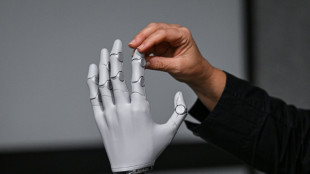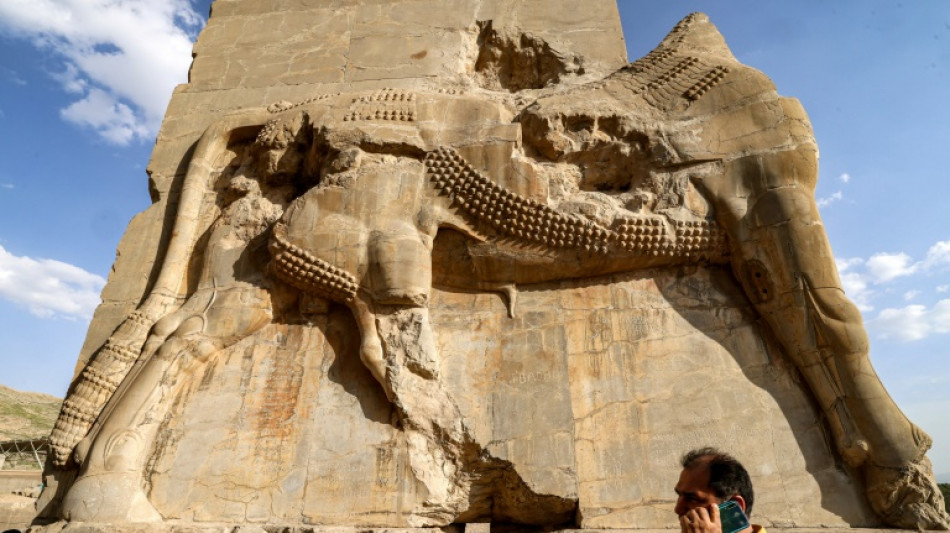
-
 Leftist, far-right candidates go through to Chilean presidential run-off
Leftist, far-right candidates go through to Chilean presidential run-off
-
Zelensky in Paris to seek air defence help for Ukraine

-
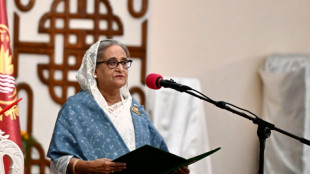 Bangladesh verdict due in ex-PM's crimes against humanity trial
Bangladesh verdict due in ex-PM's crimes against humanity trial
-
A pragmatic communist and a far-right leader: Chile's presidential finalists

-
 England ready for World Cup after perfect campaign
England ready for World Cup after perfect campaign
-
Cervical cancer vaccine push has saved 1.4 million lives: Gavi
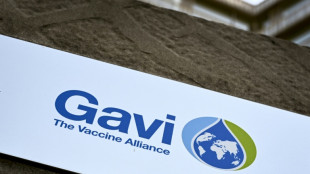
-
 World champion Liu wins Skate America women's crown
World champion Liu wins Skate America women's crown
-
Leftist leads Chile presidential poll, faces run-off against far right

-
 Haaland's Norway thump sorry Italy to reach first World Cup since 1998
Haaland's Norway thump sorry Italy to reach first World Cup since 1998
-
Portugal, Norway book spots at 2026 World Cup

-
 Sinner hails 'amazing' ATP Finals triumph over Alcaraz
Sinner hails 'amazing' ATP Finals triumph over Alcaraz
-
UK govt defends plan to limit refugee status

-
 Haaland's Norway thump Italy to qualify for first World Cup since 1998
Haaland's Norway thump Italy to qualify for first World Cup since 1998
-
Sweden's Grant captures LPGA Annika title

-
 Tuchel lays down law to Bellingham after England star's frustration
Tuchel lays down law to Bellingham after England star's frustration
-
Sinner caps eventful year with ATP Finals triumph over great rival Alcaraz

-
 Portugal book spot at 2026 World Cup as England stay perfect
Portugal book spot at 2026 World Cup as England stay perfect
-
Hakimi, Osimhen, Salah shortlisted for top African award

-
 Sinner beats great rival Alcaraz to retain ATP Finals title
Sinner beats great rival Alcaraz to retain ATP Finals title
-
Schenk wins windy Bermuda Championship for first PGA title

-
 Crime, immigration dominate as Chile votes for president
Crime, immigration dominate as Chile votes for president
-
Kane double gives England record-setting finish on road to World Cup

-
 World champions South Africa add Mbonambi, Mchunu to squad
World champions South Africa add Mbonambi, Mchunu to squad
-
Greenpeace says French uranium being sent to Russia

-
 'Now You See Me' sequel steals N. American box office win
'Now You See Me' sequel steals N. American box office win
-
Argentina beat Scotland after frenzied fightback

-
 Argentina beat Scotland after stunning fightback
Argentina beat Scotland after stunning fightback
-
Pope urges leaders not to leave poor behind

-
 Pressure will boost Germany in 'knockout' Slovakia clash, says Nagelsmann
Pressure will boost Germany in 'knockout' Slovakia clash, says Nagelsmann
-
Ecuador votes on hosting foreign bases as Noboa eyes more powers

-
 Portugal qualify for 2026 World Cup by thrashing Armenia
Portugal qualify for 2026 World Cup by thrashing Armenia
-
Greece to supply winter gas to war battered Ukraine
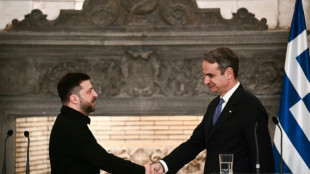
-
 India and Pakistan blind women show spirit of cricket with handshakes
India and Pakistan blind women show spirit of cricket with handshakes
-
Ukraine signs deal with Greece for winter deliveries of US gas
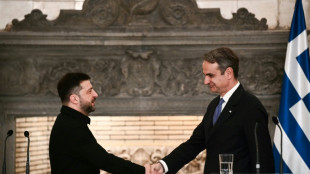
-
 George glad England backed-up haka response with New Zealand win
George glad England backed-up haka response with New Zealand win
-
McIlroy loses playoff but clinches seventh Race to Dubai title

-
 Ecuador votes on reforms as Noboa eyes anti-crime ramp-up
Ecuador votes on reforms as Noboa eyes anti-crime ramp-up
-
Chileans vote in elections dominated by crime, immigration

-
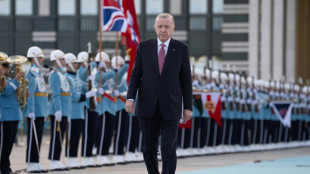 Turkey seeks to host next COP as co-presidency plans falter
Turkey seeks to host next COP as co-presidency plans falter
-
Bezzecchi claims Valencia MotoGP victory in season-ender

-
 Wasim leads as Pakistan dismiss Sri Lanka for 211 in third ODI
Wasim leads as Pakistan dismiss Sri Lanka for 211 in third ODI
-
Serbia avoiding 'confiscation' of Russian shares in oil firm NIS

-
 Coach Gambhir questions 'technique and temperament' of Indian batters
Coach Gambhir questions 'technique and temperament' of Indian batters
-
Braathen wins Levi slalom for first Brazilian World Cup victory

-
 Rory McIlroy wins seventh Race to Dubai title
Rory McIlroy wins seventh Race to Dubai title
-
Samsung plans $310 bn investment to power AI expansion

-
 Harmer stars as South Africa stun India in low-scoring Test
Harmer stars as South Africa stun India in low-scoring Test
-
Mitchell ton steers New Zealand to seven-run win in first Windies ODI

-
 Harmer stars as South Africa bowl out India for 93 to win Test
Harmer stars as South Africa bowl out India for 93 to win Test
-
China authorities approve arrest of ex-abbot of Shaolin Temple


The stone-eaters that threaten Iran's ancient Persepolis
Conservationists at Persepolis, Iran's most iconic ancient site, are waging a delicate battle against an unlikely adversary: tiny but persistent lichens eroding the millennia-old monuments.
The fight, which began years ago, is aimed at stopping the threat to the integrity of the site's structures and its intricate carvings from lichens, organisms that grow on surfaces like stone and can slowly break them down over time.
Built in the 6th century BC by Darius I, Persepolis has withstood destruction, looting, earthquakes, fires and harsh weather. It remains a source of pride for Iranians and a major tourist destination.
"It's an open-air museum reflecting 25 centuries of Middle Eastern life," said Alireza Asgari Chaverdi, director of the site located about 50 kilometres (30 miles) from the southern city of Shiraz.
"It is the foundation of Iran's history, culture and socio-cultural life."
A UNESCO World Heritage Site since 1979, Persepolis features colossal sculptures and intricate stone reliefs of ancient Persian kings, nobles and deities.
But these have suffered over the years from lichen, a combination of an algae and a fungus.
"This is the most serious problem, especially for carvings on stones," said Shahram Rahbar, a conservationist at the site.
"If we do nothing, these organisms could reduce these relics to dust within 50 to 100 years," he said as he treated lichen growth on one slab.
- Lost motifs -
Red lichen marks are now etched into many of the ancient relics at Persepolis.
The spread of lichens, which dissolve minerals and penetrate stone surfaces by more than 1.5 centimetres (.6 inches), is driven by industrialisation, acid rain and the harsh desert climate, said lichenologist Mohammad Sohrabi.
"We cover the lichens with a material and, after a week, repeat the process until they weaken enough to be removed with suction devices," said Rahbar.
Iran is home to more than 3,000 species of lichens, with 500 to 700 varieties growing on historical monuments, Sohrabi said, noting that some at Persepolis were over 1,700 years old.
"Many of Persepolis's intricate motifs have already been lost due to lichen activity," he said.
Beyond Persepolis, other sites in Iran, like the Bisotun inscription in Kermanshah province, have also been affected.
Bisotun, another UNESCO World Heritage Site, features a massive carved inscription recounting the conquests of King Darius I and has suffered significant degradation due to lichen growth.
- 'More important than our lives' -
At Persepolis, Rahbar and his team work relentlessly to combat the infestation.
"We destroy the lichens using modern techniques like lasers and substances that act like antibiotics," Rahbar said, describing what he called a "painstaking" process.
Public concern grew after an official highlighted a lack of funds for preserving Iran's historic sites.
Iran's deputy culture minister, Ali Darabi, said the annual budget for restoring each monument was only 130 million rials (about $220), while maintaining all registered historical monuments would require nearly $84 million a year.
As Mohsen, a 41-year-old retiree from Ghazvin, stood before a ruined column of the Apadana palace, he said, "Maintaining this site is more important than our lives."
Ghashghaei, an 82-year-old retiree visiting with his family, agreed.
For him, the site stands as a poignant reminder that "Iranians created an ancient civilisation," he said.
U.Shaheen--SF-PST




